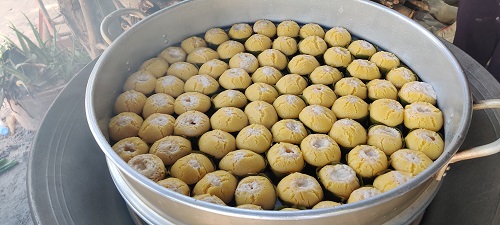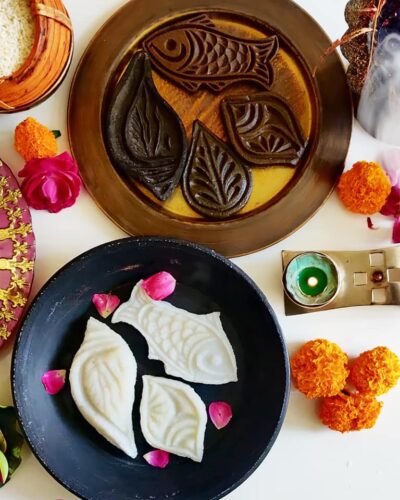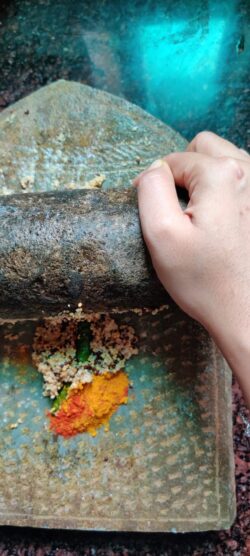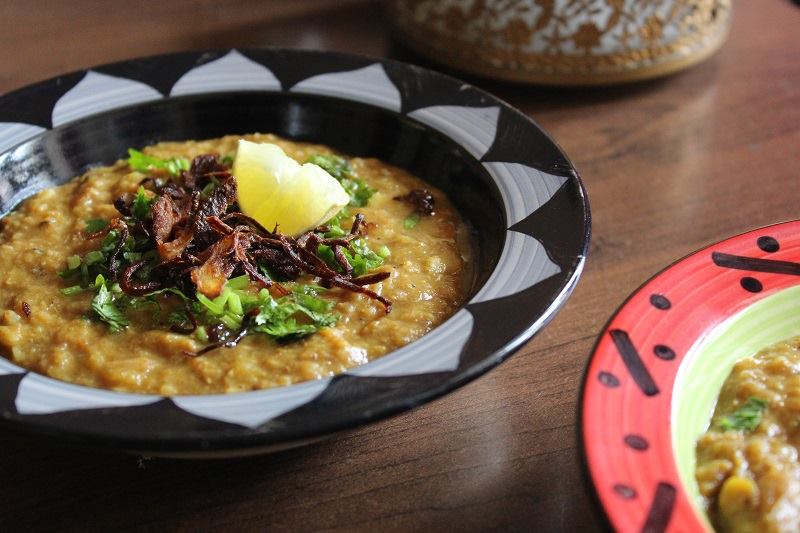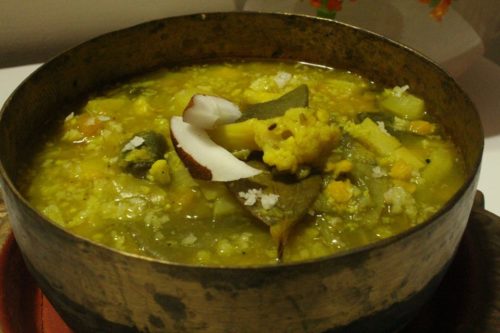
‘Aashine randhe, kartike khay
Je bor mange, shey bor paey’
The above limerick translates into, ‘One who cooks in the month of Aashin and eats it in the month of Kartik is blessed with all the boons she asks for…’
When Ma all of a sudden mentioned that today is aat anaaj, it brought back a faint taste of fresh vegetables and the limerick. The last I ate it was a decade and a half ago. Ma never reminded me in so many years. I never made it. It remained as a latent memory, awaiting to be stoked by my ‘now Facebook savvy’ mother who loves reminding me of such rituals and recipes that I can write about in my blog. I guess, in so many years she has found a medium appealing enough to urge me to document her heritage. May be she finally trusts me to do justice to these.
Aat anaaj is cooked in East Bengal on the last day of the month of aashin (as per the Bengali calendar). In some regions, it is also called ‘Garur daal’. Some of it is saved and eaten the next day, that is the first day of the Bengali month of kartik. I don’t think the ritual has any religious implication. It is more of a celebration of new produce of the season. It is the first day of the year when hyacinth beans or sheem is eaten; also the last day of the year when shapla or water lily stems are eaten. This sits well with seasonal and sustainable eating. Perhaps the practice of saving some for the next day symbolises keeping stock of food ready for winters to come. Kartik after all, is the beginning of the dry season. In many parts of the country, it is a month when the earth is thanked for the abundance and prayed to for good crops in the coming season.
The ritual comes with the limerick that I wrote above, claiming it fulfills wishes! Wish fulfillment or not, I was happy enough to make a pit stop on the way back from office to buy eight kinds of seasonal vegetables – aat anaaj is medley of eight vegetables cooked with three kinds of pulses, without any tempering. As simple as it sounds, the flavours are delightful. Clean, fresh and fragrant. Strong enough in its subtlety to form a strong memory.
In days of cold storage and weather-resistant crops, perhaps the biggest wish isn’t year long abundance. No harm though, to embrace seasonality. Absolute bonus to inculcate a habit that might form a strong memory and bonds with roots.
Aat Anaaj
1. Wash, soak and boil equal quantities of chana, matar and moong daal (split bengal gram, dried peas and split moong beans), till soft but not mushy.
2. Wash, peel and cut eight varieties of seasonal winter vegetables like hyacinth beans, water lily stems, taro, radish, brinjal, pumpkin and cauliflower into medium sized pieces.
3. Put all the vegetables together in a wok with a little turmeric powder, salt and bay leaf. Cover and put over slow flame till the vegetables cook in their own juices. Though check and add a little water to prevent burning.
4. Add the cooked pulses, bring to a boil and adjust salt and sugar.
5. Add a little ghee and roasted cumin powder to finish. Serve with steamed rice or have a steaming bowl full as a winter stew.



